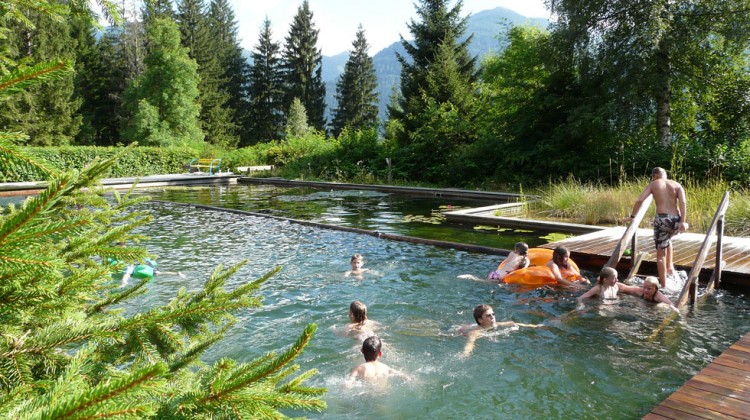A swimming pool is always going to add a wow factor to any home. Picture an infinity swimming pool filled with therapeutic salt water, constantly heated to a temperature of 28C! Or maybe you lean to a more palatial styling with roman columns and statues of the Gods. Daring to dream this big is going to cost you greatly in the real world. Pool contractors will give you a cost based on expensive materials including fibreglass and rebar. However that does not mean that swimming pools are only reserved for the rich and famous.
In recent years there has been a growing trend towards natural swimming pools, using gravel and clay and relying on rushes and lilies to naturally filter the pool. At a cost of approximately £1500, homeowners across the UK are getting in on the action.
Creating your pool starts with the dig. Hollowing a hole in the ground is made easy by renting an excavator from a local plant hire firm. You can dig as deep as you like but the trick is to ensure that the sides slope, as this will stop the soil from caving in. Lining your pool can be done with either bentonite or a synthetic liner. Whilst bentonite is a more cost effective option it does not bond well with sandy soil, a liner is more versatile. Line your pool with a layer of sand before placing the liner over the top, this will offer extra protection if the liner develops a hole.

Once your liner is in place, fill the bottom of the pool with clean gravel. Overtime the gravel will contain helpful bacteria which can help biodegrade any leaves or natural products which fall into your pool. Finish off the edge of the pool with rocks, flagstone or for a bang on trend look select decking.
When deciding on the size of your pool you need to consider that 50 per cent of the surface area needs to be covered by plants. The plants work as a biological filter, removing excess nutrients in the water. In order for this to happen the water in your pond needs to continuously circulate. Your pump should filter the water through tubes and into the pond zone for cleaning.
Choose your plants carefully and think about the year round climate. Due to the increase in the number of natural pools being built, many garden centres have expert knowledge on what to plant. Recommended plants include rushes, aquatic irises and water primroses. Plants such as water lilies should work to limit algae blooms but if does become a problem, adding more plants to your pond should lower the PH level.
Ensuring your pool is beautiful all year takes a little monitoring. Simple maintenance goes a long way so ensure you remove debris in spring and autumn and make sure your water level is constant. Buy a water testing kit and use it frequently so you can monitor the health of your water and limit problems before they arise.
This article is provided by http://www.ruttle.co.uk